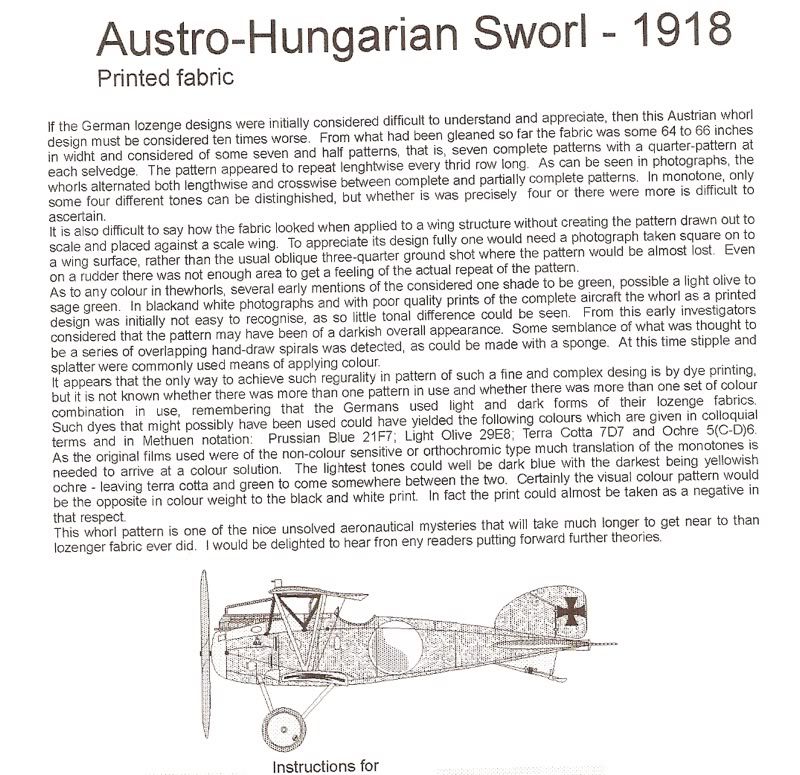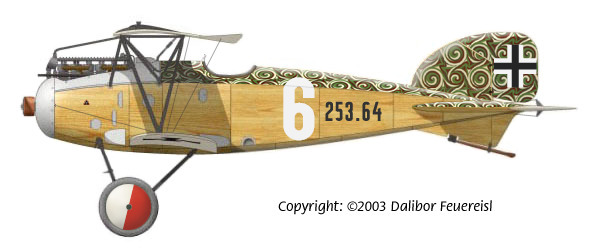I've had time to de-stress a little, and unless another crisis appears, will be back to blogging regularly again soon. I hope. Remembering what happened the last time I said that.
As a change of pace, a tidbit from history I've been using to keep my mind refreshed and relaxed, ready for whatever Joker I get in Life's next hand. And now for something completely different. The markings on Austra-Hungarian aircraft in 1918.

This represents preprinted fabric from J. Backhausen & Söhne (sons) for the Oeffag factory and applied to the wings and horizontal tail unit of four late production 153. & about 1/3 of all the 253. series Albatros D type machines.Further research shows that it was silk-screened, not printed (the rollers of the time weren't up to it); that there were two layers, one brown, one green, on a base fabric that could be any colour from light beige (undyed) to mustard-yellow; and that the registration was deliberately coarse, to give the effect of dark areas around the edges.
This was the effect, as near as we can determine from the black-and-white photos and a sample of the fabric that has survived:
This aircraft, "Number Six", Oeffag Albatros D.III 253-64, is shown in the picture below.
The fuselage is varnished plywood, a strip of "sworl" cloth glued on the top and covered with dope/varnish, and all wing and tail surfaces composed of this cloth.
The aircraft was usually piloted by Friedrich Hefty of the Flik 42J fighter squadron.
253.64 Albatros D.III (Oef) Flik 42J Friedrich Hefty
Hefty was wounded in the right foot by Italian anti-aircraft fire on 7 October 1915. He transferred to Flik 42J in the Isonzo sector of the Italian front in October 1917, scoring his second victory during the Battle of Caporetto. During 1918, Hefty formed a strong friendship with fellow pilots Johann Risztics and Ferdinand Udvardy. Amongst the airmen of Flik 42J, the trio became known as the Arany Triumviratus (Golden Triumvirate).
Hefty began marking the sides of his Albatros D.III with the number "6."
This particular aircraft was flown by Friedrich Hefty of Flik 42J, and it was forced down August 28th 1918 when being flown by Geza Keisz.
Doing this research on such an obscure topic hones my skills in wading through legal and medical databases, in search for clues in the Science of Sex and Gender.
But I also need to do some meditation, giving my motor skills some exercise, while the higher brain-functions relax and just exist. "Sometimes I sits and thinks, and sometimes I just sits". Sometimes it helps not to be self-aware of what one is doing, to let the unconscious mind take over for a while. The result? A model in 1/144 scale, 5.01cm (just under 2 inches) long.


No comments:
Post a Comment